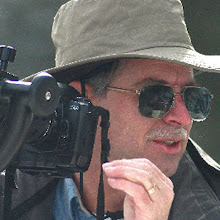After several years of photographing nature, I've developed a consistent sequence or process of thought prior to actually photographing a subject. I run through this sequence for every situation and because it's sort of a "check list", I rarely miss a step. I thought I'd pass this along to you, as I'm frequently asked questions about the technical aspects of my images along the lines of lens types, shutter speeds, and so forth. If you learn a consistent process (and it may be different for you), after a while it will become second-nature.
Depending on the subject I intend to photograph, I'll run through the equipment I'll likely require before leaving home. Will I need special lenses or lighting? How about spare batteries and memory cards if it will be an extended shoot? Scenics or wildlife or both? If it's a commercial shoot, will it be a portrait session or product photography? Will I need to bring studio gear?
Once I answer these general questions, I'll pre-visualize the shots I intend to take. Of course, if it's a commercial shoot, I'd probably have developed a "shot list" in advance. Let's say this example will be a nature shoot. Here's the thought process I go through once I arrive at the location and start scouting for good spots.
1. Is the lighting bright or dim and can I use a tripod or must I hand hold? For handheld, I'll ensure the image stabilization is "on" and I may increase the ISO to an appropriate speed. If tripod-mounted, image stabilization should be switched "off". I also make sure my exposure compensation is "zero" (or, for my Canon bodies, I find setting it to -0.3 is best for the initial exposure).
2. Since I normally shoot in raw, the white balance is really immaterial, but to save a step in post-processing, I may pre-adjust the white balance to the appropriate lighting source. If it's critical to get the white balance correct (mixed lighting, for example), I'll go through a custom white balance. If shooting snow, especially if including shadow areas, or sunsets/sunrises I'll automatically place the white balance in "Cloudy" to warm up the image. If you're shooting JPEG, then you'll definitely want to pre-set your white balance!
3. Is the subject wildlife or scenic? If wildlife, I'll use the appropriate telephoto and support the camera. If scenic, either the normal zoom (24-70mm) or wide angle (16-35mm) if I need the foreground to dominate. It's best to use a tripod for either case.
4. Narrow or wide depth of field (DOF)? Scenics generally use a wide DOF, while flower or wildlife portraits use a narrow DOF. Set the mode to Aperture Priority and adjust the aperture accordingly. Set the focus to the hyperfocal distance (usually 1/3 up from framed image in the viewfinder).
5. Do I wish to show motion (stream or waterfalls) or create abstracts (zoom or "jiggle" blurs)? Set the mode to Shutter Priority and the shutter to an appropriate setting. I generally use 1/10th to 1/4 second for moving water. Any more and the water starts to lose detail and overexpose. (If shooting sports, set the shutter to 1/500th second, or faster.)
6. Is the subject neutral-toned or lighter/darker? Preset the exposure compensation in advance and check the histogram after the first shot. Strive to "expose to the right", but avoid extreme overexposures. If photographing sunsets, sunrises or red rock formations (Southwest or Garden of the Gods, etc.) watch that the red channel doesn't oversaturate.
Usually, I'm pre-adjusting the camera as I'm approaching the subject. By using this thought process enough times, it will become second-nature.





No comments:
Post a Comment